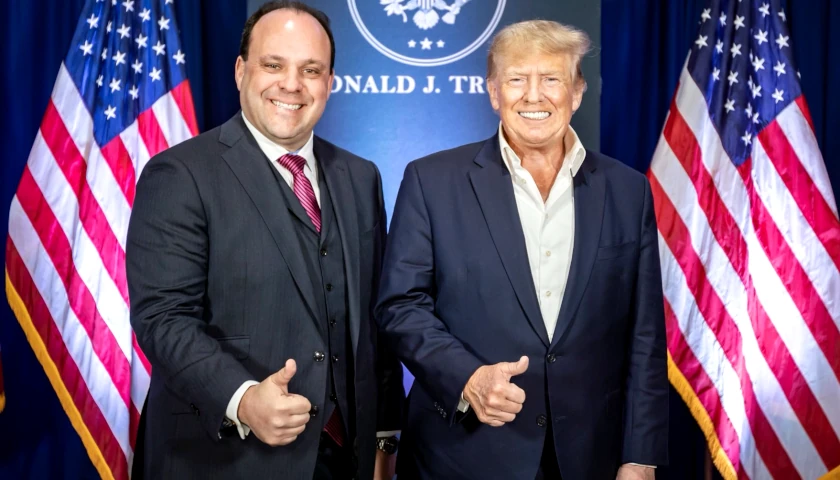by Jeremy Carl
Late last month, Montana ended its participation in the extended federal unemployment benefits program. No surprise this event was little noted in the national press, since Montana’s decision to exit the program had a direct effect on fewer than 20,000 people (the total unemployed population of Montana). Yet Montana’s decision had an enormous effect on the country as a whole.
Particularly for those inside the Beltway, it is easy to focus on Washington, D.C. as the only place where policymaking matters. And with an administration desperate to centralize power as it prints ever-growing piles of money with which it hopes to bribe or threaten states and localities, such an attitude is understandable. Recent developments in states like Montana far outside the beltway, however, show how national political innovations can be driven by states with smaller populations far from the beltway swamp and present conservatives with a path for political success.
While elections in Montana often are driven by local and idiosyncratic issues as well as personal relationships (understandable in a state with some of America’s least populated state house and senate districts), Montana is and has long been a very red state. The only Democratic presidential candidate since 1948 to win a majority here was Lyndon B. Johnson in his 1964 landslide win over Barry Goldwater. It is much easier to convince and move 1 million people in Montana than 332 million Americans. And yet by moving 1 million Montanans (or 800,000 South Dakotans) or 1.8 million Idahoans, the Right can often exercise an outsized influence on the national debate.
Montana’s new governor, Republican Greg Gianforte, was elected in 2020 in a post-COVID red wave that saw the GOP win every single statewide office by large margins along with a supermajority in the state house and a near-supermajority in the state senate.
Gianforte, who before becoming governor was one of the most successful entrepreneurs in Montana’s history, realized there were a huge number of jobs going unfilled in the Big Sky State. Gianforte also realized that this situation was due, in no small part, to the unemployment bonus pushed by Democrats in Congress. These bonuses made it as profitable to collect unemployment as it was to work in many jobs (sometimes, even, more profitable), especially in states like Montana where generally lower costs of living were matched by relatively low wages.
Thousands of jobs were going unfilled, not just in Montana’s small but fast-growing cities, but even in more rural outposts where jobs typically have been hard to come by. National Park gateway towns couldn’t find staff for the record number of spring and summer visitors. Restaurants in Montana’s cities closed or reduced hours for lack of staff. Bonuses were given to bus drivers to sign up so that kids could get to school.
All other things being equal, of course, a tight labor market is good because it raises wages. But there is a difference between a tight labor market being driven by strong job growth, high demand for employees, a crackdown on illegal labor and similarly positive trends, and a tight job market being artificially driven by the fact that the federal government is paying people massive amounts of money that it doesn’t have for them to sit around and not work.
When Gianforte announced on May 4 that Montana would end unemployment benefits early, not even industry groups had yet announced support for the move. But soon they followed Gianforte’s bold lead, and by the end of May, 24 states had announced plans to end federal extended unemployment benefits. Leadership in one state with just 0.3 percent of the U.S. population led to a backlash against a stupid national policy that eventually encompassed almost half the country.
This was not the only time this year that an action in Montana had nationwide repercussions.
Earlier in the legislative session, the legislature—following a similar act in Arizona—passed legislation making Montana a Second Amendment sanctuary state and Gianforte signed the bill, which meant state officials would decline to enforce federal gun laws. Montana, which has the nation’s highest gun ownership rate, passed what many consider the original Second Amendment-sanctuary law, the Firearms Freedom Act in 2009, which was eventually struck down for technical reasons by the Ninth U.S. Circuit Court of Appeals. The entire Second Amendment sanctuary movement, which has grown to 17 states and numerous localities in the other 33 states, has grown out of a single early 2000s effort involving a few state senators who each had fewer than 20,000 constituents.
Unlike so-called “sanctuary cities” for illegal aliens—which simply refuse to enforce federal law without bothering to justify the action by demonstrating the illegitimacy of those laws—Second Amendment sanctuaries base their nonenforcement of federal law on fundamental and historically grounded assertions of American Constitutional rights, making them much more powerful.
By repudiating federal overreach, states like Montana can take the lead in forcing the federal government to stop enforcing odious and constitutionally dubious federal laws in places where they are deeply unpopular. Does the Biden Administration want to send troops to Second Amendment sanctuary states to enforce constitutionally dubious, ineffective, and unpopular laws?
But Montana’s national leadership is not limited to its governor and legislature. In the early days of the critical race theory (CRT) debate, Montana Superintendent of Public Instruction Elise Arntzen asked Montana Attorney General Austin Knudsen for a legal opinion on whether critical race theory violated the U.S. and Montana constitutions.
Oklahoma and Idaho had already acted legislatively against CRT, but those states provided little intellectual or legal justification for their actions in the text of their laws. This left CRT supporters ample room to introduce racially divisive and pernicious concepts through holes in the legislative text. Further, by not grounding their legislation in either state or national constitutions, they left their laws more vulnerable to being overturned.
Knudsen took a far more fundamental approach, demonstrating in a 25-page, closely argued legal opinion that critical race theory was already illegal and in violation of both the Montana and U.S. constitutions and spelled out those violations (as well as permitted non-discriminatory pedagogy on these same topics) in impressive detail. While his opinion can be challenged in court, it provides a very strong foundation for CRT opponents to reference in the future.
By putting the U.S. and Montana constitutions, rather than mere legislative preference, at the heart of their approach, Montana officials have raised the stakes in the battle and provided a blueprint explaining why CRT is and should be illegal in a way that goes far beyond the states that simply banned the practice legislatively. Again, the actions of a single small-population state created a template for national action.
Of course, none of the successes in Montana (or in larger states such as Florida) suggest that conservatives should give up on national action. But with Biden in the White House, the Right is unlikely to have much success in D.C. in the near future. In contrast, we control many states and localities that can serve as ideal laboratories for our policy ideas. As the successes in Montana show, even sparsely populated states far from the Beltway can help spark a national renaissance in conservative policymaking.
– – –
Jeremy Carl is a senior fellow at the Claremont Institute. He served as deputy assistant secretary of the interior under President Trump and lives with his family in Montana.




